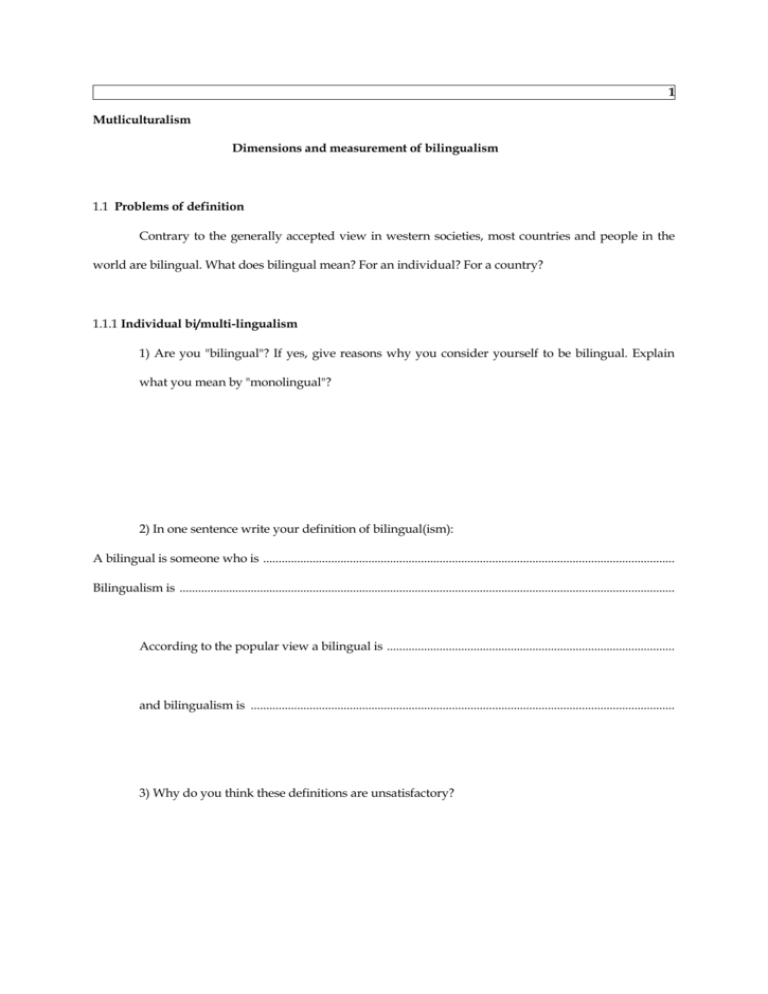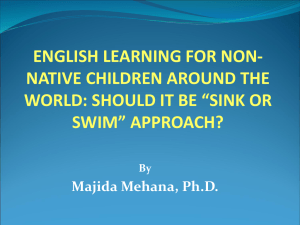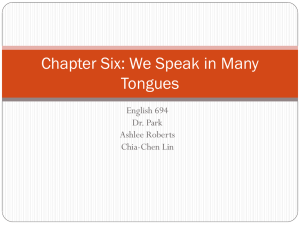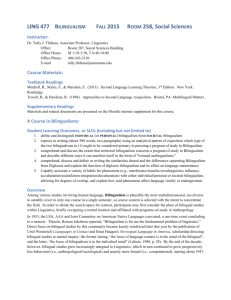Dimensions of bilingualism
advertisement

1 Mutliculturalism Dimensions and measurement of bilingualism 1.1 Problems of definition Contrary to the generally accepted view in western societies, most countries and people in the world are bilingual. What does bilingual mean? For an individual? For a country? 1.1.1 Individual bi/multi-lingualism 1) Are you "bilingual"? If yes, give reasons why you consider yourself to be bilingual. Explain what you mean by "monolingual"? 2) In one sentence write your definition of bilingual(ism): A bilingual is someone who is ..................................................................................................................................... Bilingualism is ................................................................................................................................................................ According to the popular view a bilingual is ............................................................................................. and bilingualism is ......................................................................................................................................... 3) Why do you think these definitions are unsatisfactory? 2 1.1.2 Societal bi/multi-lingualism 1) Estimate how many countries in the world are bi/multi-lingual: 2) What is odd about this list? How many countries have more than one language? Are there really so few bilingual countries? 3) Can you name a unilingual country? 4) Where is English spoken a) as a first language? b) as a second language? 3 1.2 The Dimensions of Individual Bilingualism Traditional definitions of individual bilingualism are inadequate because they are imprecise and one-sided, failing to take into account the many different dimensions of this phenomenon. Individual bilingualism, called BILINGUALITY by Hamers and Blanc (1989:6) may be defined as: The psychological state of an individual who has access to more than one linguistic code as a means of communication; this access varies along a number of dimensions, which are linguistic, psychological or sociological in nature". Therefore, Bilinguality is a relative, variable and multidimensional reality. These dimensions include (in random order): 1) The relative competence in each of the languages; 2) The age and context of acquisition of each language; 3) The presence or absence of communities speaking the two languages in the environment; 4) The relative status of each language in the society; and 5) The bilingual's cultural identity. 4 To define the bilinguality of an individual it is necessary to describe the individual along all five dimensions. Throughout this course, for ease of explanation, we shall consider only the case of two languages but it should be kept in mind that most of what follows is applicable to more than two languages. 1.2.1 Relative competence in the two languages Balanced bilinguals Dominant bilinguals Ambilingualism Why is the ambilingual a rare species? 1.2.1 Age and context of acquisition Childhood bilinguality a) simultaneous LA/LB b) consecutive L1/L2 Adolescent " Adult " 1.2.3 Presence or absence of speech communities Endogenous bilinguality Exogenous Give examples of : a) endogenous bilinguality b) exogenous bilinguality " 5 1.2.4 Relative status of the two languages Additive bilinguality Subtractive " 1.2.5 The cultural identity of the bilingual Bicultural Monocultural L2 - Acculturated Deculturated







